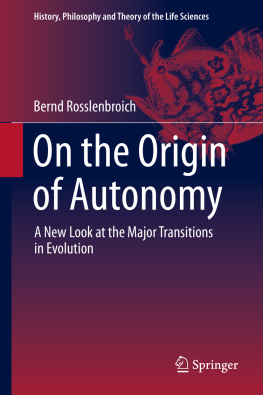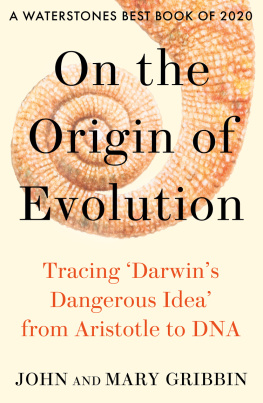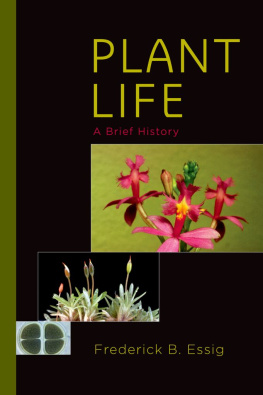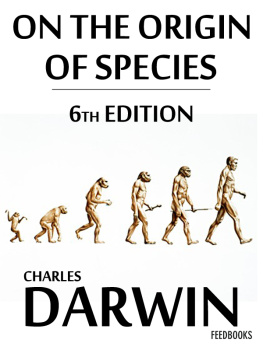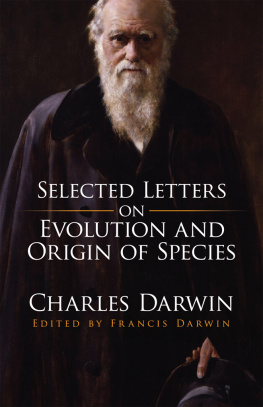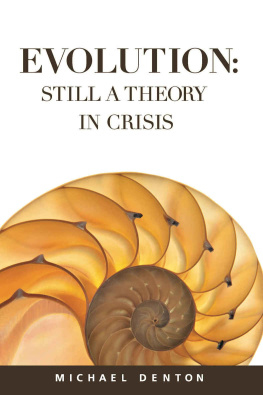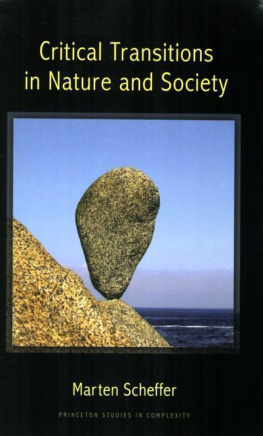1. What Is the Outcome of Evolution?
When discussing organic evolution the only point of agreement seems to be: It happened. Thereafter, there is little consensus. With this remark, Conway Morris () begins a review, summarizing the situation in the field of evolutionary biology at the beginning of the twenty-first century and concludes from this that our understanding of evolutionary processes and mechanisms is incomplete.
Statements such as this are now increasingly emerging in the scientific literature, after the proponents of Neo-Darwinian theory have been trying for decades to convince us that there is no need to search for other or additional factors of evolution than random mutation and selection, and that the main outcome of evolution is divergence caused by different adaptations. Most authors of this new literature do not contest natural selection as one factor of evolution. However, they contest that it alone sets the evolutionary sails. Many of us feel that something is missing; that selection is not enough; that the actualization of some creatures, together with the failure of others to emerge from the realm of the possible, requires something else something internal that interacts with selection in a particular way. That is what Gould and Lewontin were saying more than twenty years ago (Arthur , pp. 10, 25).
Thus, there have been indicators during the past 15 years to the effect that the great synthesis of the mid-twentieth century is due for a major revision (Pigliucci and Mller ). According to some literature, a different view of Darwinian evolution is coming forth. However, it is not clear yet in which direction this new view points. But, there are valuable pieces of theories, which have to grow together in some future.
However, this revision comes at a difficult time, as Darwinian evolution is confronted with a scientifically fruitless counterpart that is trying to bring science back to a position it held before the results of the enlightenment and the scientific revolution. Indeed, it seems to be attractive for some simple-minded contemporaries to initialize again the old debate around creationism, masqueraded as intelligent design. At least in the public perception, there seems to be no alternative between neo-Darwinian one-sidedness on the one hand and creationism on the other. To be sure, in the professional literature the views become more pluralistic, exhibiting fairly sound scientific development.
Besides the repeatedly formulated doubts that the assumed random process would be able to create order within the evolutionary process, a number of empirical findings fueled the rumblings of theory modification. One of the enigmas arose with the growing knowledge of comparative molecular biology. It became increasingly difficult to explain the immense diversity of life despite its deep and pervasively similar molecular architecture.
A crucial question is how evolutionary innovations were generated. What is the origin of new constructive principles and of new organs? What was at the beginning of the major evolutionary transitions: new structures, new genes, a new environment, a new behavior, or new ontogenetic pathways (Nitecki )?
In recent years, increasingly tangible insights into the origin of evolutionary innovations have emerged. Although the picture is still fragmentary, these insights contain several surprises. Symbiosis, for example, delivers a new system state within a single macroevolutionary step and probably has a function in a number of transitions in addition to the generation of the eukaryotic cell (Margulis and Sagan ).
Investigations usually are made into the origins of innovations and the mechanisms by which they were generated. However, within this discussion a central aspect continues to be neglected: Likewise, it is necessary to question the properties of these innovations and to ask what is qualitatively generated during the macroevolutionary transitions. Are evolved organisms in later time periods in some consistent way, in some aspect of their individual morphology, physiology, and behavior, different from organisms more primitive in earlier times (McShea )? Or, in short, what have these changes produced? There have been some attempts to tackle these questions, but they have not as yet generated a great deal of interest within the scientific community.
In this book, I develop the proposal that a recurring central aspect of macroevolutionary innovations is an increase in individual organismal autonomy in the sense of emancipation from the environment with changes in the capacity for flexibility, self-regulation, and self-control of behavior. This concept is not new. Since the days of Darwin, it has emerged occasionally. However, comments on the principle were rare and generally cursory. Authors usually gave some few examples but did not explore the implications in any depth. A systematic inquiry has been performed only recently (Rosslenbroich ).
I propose that the relevance of differences in autonomy for understanding macroevolutionary innovations was underestimated in the past. In addition to the interest in environmental adaptation, the principle has been neglected. Although it is somehow en vogue, it is not integrated within evolutionary theory.
The view presented here is neither intended to replace conventional evolutionary theories nor claimed that this is some sort of driving force. Principally, increasing autonomy is presented as a recurring pattern during macroevolutionary events. However, it is proposed that an integration of the available knowledge of dependency on and independency from environmental factors that is more complete is an important element for our further understanding of macroevolution.
Changes in autonomy are observable patterns of many major evolutionary transitions and can be described with morphological and physiological properties. The intention here is first to define and to describe the perceivable pattern in order to help to detect and identify underlying structure and cause, as was proposed as the appropriate way to study patterns, processes and directions in the history of life during a Dahlem workshop (Wake ).
In this context, Lewontin () regards it as necessary to revise the notion of adaptation through a widened understanding of the relations between organisms and their environment. He shows that this relation is more complicated and may not be reduced to a passive principle. He states that the environment of an organism is not a given physical world outside, to which it has to fit, but that there are rather complex interactions between both sides. Thus, organisms determine which elements of the external world are relevant to them to form their environment, and they smooth out the temporally and spatially varying external conditions. Moreover, organisms actively construct a world around themselves and are in a constant process of altering this environment. Thus, he states: The time has come when further progress in our understanding of nature requires that we reconsider the relationship between the outside and the inside, between organism and environment (p. 47).

